Versuchen GOLD - Frei
LOST GREEK TRAGEDIES REVIVED
Archaeology
|January/February 2025
How a scholar discovered passages from a great Athenian playwright on a discarded papyrus

In the necropolis of the ancient Egyptian city of Philadelphia, archaeologists unearthed a third-century A.D. pit grave (right, in foreground) next to an earlier mausoleum (background). A papyrus containing passages from two lost tragedies by the fifth-century B.C. Greek playwright Euripides (shown in a marble portrait, left) was found in the grave.
SINCE THE LATE NINETEENTH century, archaeologists have recovered troves of administrative documents and personal archives in the ancient city of Philadelphia, on the northeastern edge of Egypt's Fayum region. Yet only around 30 papyri featuring excerpts of literature have been found there. When archaeologist Basem Gehad of the Egyptian Ministry of Tourism and Antiquities began excavating the city's necropolis in 2017, he had no idea that he would discover one of the most significant pieces of lost ancient literature to have been found in at least 60 years.
In 2022, Gehad unearthed a third-century A.D. pit grave in the Roman section of the necropolis. The grave contained the mummified body of a woman, and, on a ledge above her remains, a mummified child. In a corner of the pit, the team found three roughly folded papyri, two of which record information about trees for the city's temples and a list of names connected to Roman loans.
Diese Geschichte stammt aus der January/February 2025-Ausgabe von Archaeology.
Abonnieren Sie Magzter GOLD, um auf Tausende kuratierter Premium-Geschichten und über 9.000 Zeitschriften und Zeitungen zuzugreifen.
Sie sind bereits Abonnent? Anmelden
WEITERE GESCHICHTEN VON Archaeology
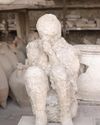
Archaeology
LEGEND OF THE CRYSTAL BRAIN
When most people envision the victims of the eruption of Mount Vesuvius in A.D. 79 that destroyed the cities of Pompeii and Herculaneum, they think of the casts of their bodies made by pouring plaster into voids left by their decaying corpses. Yet not all the physical remains of those who perished in the cataclysm decayed. In one case, a remarkable transformation occurred—a man’s brain turned to glass.
3 mins
July/August 2025
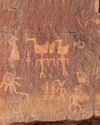
Archaeology
Birds of a Feather
Intriguing rock art in the Four Corners reveals how the Basketmaker people drew inspiration from ducks 1,500 years ago
8 mins
July/August 2025
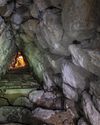
Archaeology
THE HOME OF THE WEATHER GOD
In northern Anatolia, archaeologists have discovered the source of Hittite royal power
13 mins
July/August 2025
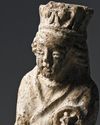
Archaeology
SAINTS ALIVE
Since 2019, archaeologists have been excavating in Berlin's oldest square, known as the Molkenmarkt, or Whey Market.
1 min
July/August 2025
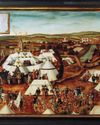
Archaeology
SOLDIERS OF ILL FORTUNE
The Schmalkaldic War, which began in 1546 and lasted less than a year, pitted the forces of the Holy Roman emperor Charles V (reigned 1519-1556) against the Schmalkaldic League, a Protestant alliance formed by German principalities and cities within the empire.
1 mins
July/August 2025

Archaeology
A NEW LOOK AT AN OLD CITY
Archaeologists are reconstructing the complicated 400-year history of Virginia's colonial capital
13 mins
July/August 2025
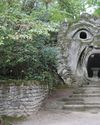
Archaeology
ITALY'S GARDEN OF MONSTERS
Why did a Renaissance duke fill his wooded park with gargantuan stone
10 mins
July/August 2025
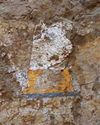
Archaeology
In Search of Lost Pharaohs
Anubis Mountain conceals the tombs of an obscure Egyptian dynasty
3 mins
July/August 2025
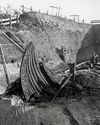
Archaeology
Setting Sail for Valhalla
Vikings staged elaborate spectacles to usher their rulers into the afterlife
15 mins
July/August 2025
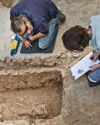
Archaeology
BOUND FOR HEAVEN
During excavations of a Byzantine monastery in 2017 just north of Jerusalem's Old City, a team led by Israel Antiquities Authority archaeologists Zubair 'Adawi and Kfir Arbiv discovered an unusual burial in a crypt beneath the altar of the complex's church.
1 mins
July/August 2025
Listen
Translate
Change font size
